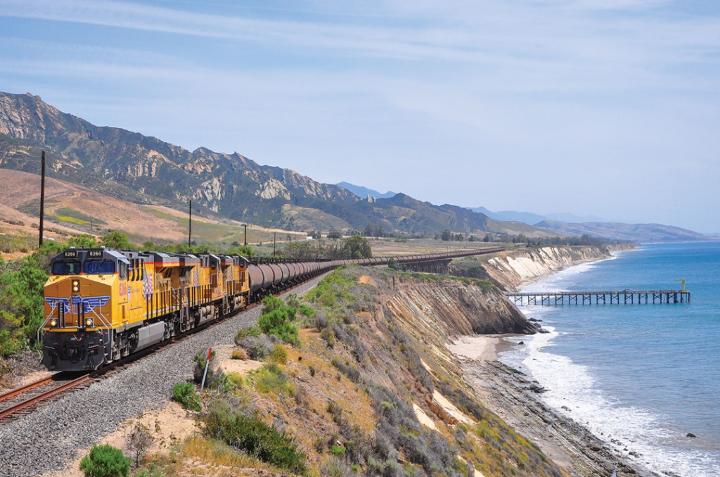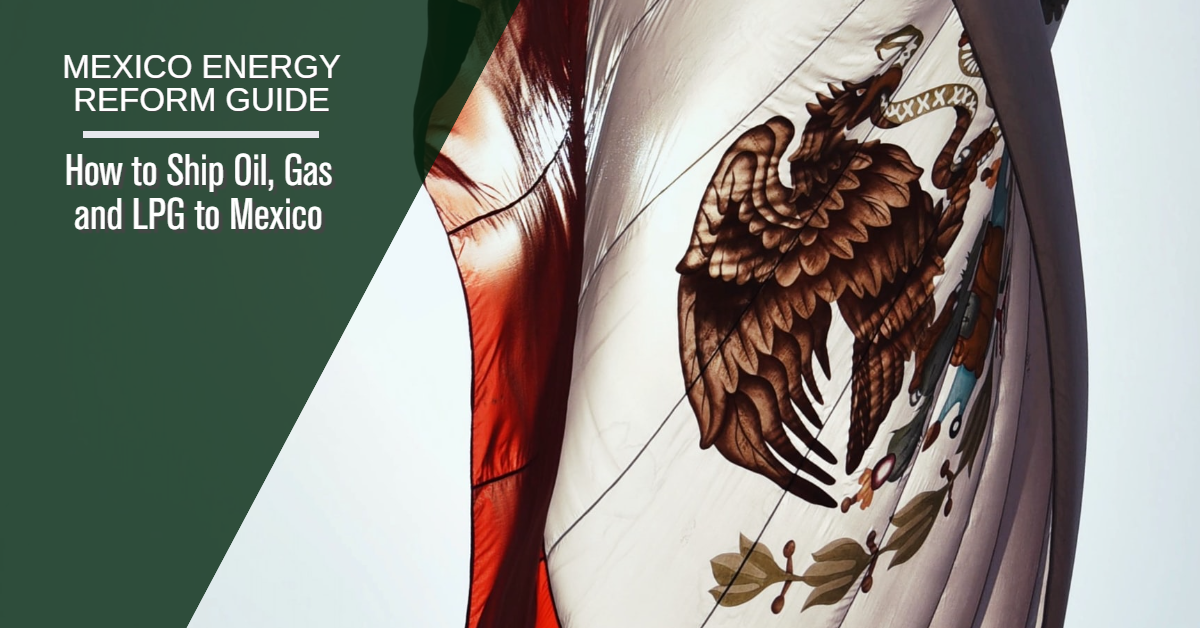If you’re a producer of oil, gas or LPG, you may already know what Mexico Energy Reform is. And if you don’t, you might want to. That’s because Mexico Energy Reform allowed the Mexico energy market to be open to private competition for the first time in nearly 80 years – and that means producers of oil, gas and liquefied petroleum gas (LPG) have lots of new opportunities to do business in Mexico.
With new energy markets opening up in Mexico, producers of gas, oil and LPG will need to find a way to get their product to brand new locations across the border. These answers to frequently asked questions about how to ship energy products to Mexico are here to help you navigate this new territory.
What Are the Transportation Options for Shipping Oil, Gas and LPG to Mexico?
The three ways to ship energy products to Mexico are truck, train and pipeline. Each comes with its own pros and cons, so if you’re a producer looking to ship your product to Mexico, you’ll want to compare your oil, gas and LPG shipping options. In general:
- Trucks are best suited for small shipments, but are susceptible to theft and can face delays crossing the border.
- Trains are the safest, most environmentally responsible option. They can accommodate large volumes, with one train able to carry as much as 300 trucks. Compared to trucks, they are more cost effective and offer simpler border crossing as well as increased security.
- Pipelines can handle large volumes and are typically cost effective, but can come with delays as well as safety and security concerns. Pipelines also have the most limited offerings when it comes to shipping origins and destinations, so depending on where you are shipping to or from, pipeline may not be an option.
Tip: See a side-by-side comparison of the three modes in this Shipping Options Infographic.
What Is the Easiest Way to Clear the Customs Process When Shipping Oil, Gas or LPG to Mexico?
Shipping to Mexico means your oil, gas and LPG shipments will have to clear customs. Pipelines bypass this process. The next easiest way to clear customs is to ship by rail. One train can carry about 300 trucks worth of oil, gas and LPG — and that means just one customs clearance, making it far simpler than having to clear every single truck.
Shipping by truck across the border can also result in delivery delays, as trucks may sit at the border for hours or even days waiting to clear customs. Rail shipments, on the other hand, cross the border quickly and easily. In fact, Union Pacific developed a process called Despacho Previo to clear southbound rail shipments into Mexico and expedite the process.
On top of being faster, railroads often have experts on staff who help customers navigate the customs process and gain clearance ahead of time.
Tip: Learn more about how to ship energy products to Mexico.
How Long Does it Take to Ship Oil, Gas and LPG to Mexico?
Two factors come into play when shipping oil, gas or LPG to Mexico: transit time and customs clearance. Both of these factors – and therefore, the total transit time – will depend on the shipping mode.
When you ship energy products by rail, the process of crossing the border can take just minutes by train. Most Class I railroads have a team of experts who can help get customs clearance for shipments ahead of time, which speeds up the process. Trucks, on the other hand, may experience major delays waiting to cross the border. So when it comes to customs clearance, rail can move your product across the border faster.
Following customs clearance, transit times for truck and rail shipments of oil, gas and LPG are about the same.
Although shipping oil, gas and LPG across the border by pipeline is quick and seamless, total transit time from origin to destination can take three to four times longer than shipping by rail.
Between transit time and customs clearance, rail is typically the fastest way to ship oil, gas and LPG to Mexico.
How Much Oil, Gas and LPG Can You Ship to Mexico at a Time?
The amount of oil, gas and LPG you can ship at a time depends on the mode you choose.
- Trucks can only ship small volumes of energy products at a time. A single trailer holds about 250 barrels of LPG and just 200 barrels of oil and gas.
- Trains can carry about three times as much oil, gas and LPG than a truck, meaning one tank car can hold about 700 barrels of oil and gas and 750 barrels of LPG. Because one train is comprised of multiple rail cars, a single train can carry the same amount of products as about 300 trucks.
- Pipelines don’t have specific limitations and can accommodate mass quantities of oil, gas and LPG.
What Is the Safest Way to Ship Oil, Gas and LPG to Mexico?
Shipping by rail is the safest way to ship oil, gas and LPG to Mexico. This is based on two factors: the reduced likelihood of a spill and security measures in place to prevent theft.
No shipping mode is immune to an accident, but since pipelines and railways generally travel through areas that aren’t highly populated, if a spill does happen, the risks to the community are lower. Because trucks frequently travel on congested roadways, they are the least safe option for shipping oil, gas and LPG.
In terms of theft, trucks make frequent stops, and by law drivers must take breaks due to hours of service regulations. Unfortunately, every stop provides an opportunity for illegal siphoning. Pipelines are also susceptible to theft, and illegal tapping of pipelines in Mexico is on the rise. In September 2020, Pemex (Mexico’s state-owned petroleum company) saw 1,103 illegal taps of its pipelines and another 1,077 in October. That’s a 22 percent year-over-year increase from October 2019 to October 2020. In an effort to thwart this problem, the Mexican government has temporarily closed some pipelines in the past. This can make shipping by pipeline problematic, as it causes increased transit time and missed delivery windows.
Trains are also not completely immune to theft, but railroads have special security measures in place that give them an advantage over truck and pipeline. In fact, railroads have their very own police forces who are charged with protecting and monitoring shipments. Putting it all together, trains are the safest way to ship oil, gas and LPG in terms of both people and the product.
Tip: Learn more about how railroads keep cross-border shipments safe.
How Do Energy Products Like LPG, Oil and Gas Ship by Rail?

Railroads ship LPG and petroleum products in tank cars. Tank cars are typically privately owned, which means they are not provided by the railroad. However, companies who would like to ship energy products by rail can either purchase or lease tank cars, and in both cases, railroads can help connect them with a supplier.
Tip: Learn more about how tank cars are used, what they look like and more.
What If I Want to Ship Gas, Oil or LPG by Rail but the Origin and/or Destination Aren’t Rail Served?
Shipping oil, gas and LPG by train is a possibility for any producer of oil, gas or LPG, even if the facility you’re shipping from or the facility you’re shipping to don’t have railroad tracks that serve the location. When that’s the case, shippers leverage transloading to transfer energy products between trucks and trains. When you transload oil, gas or LPG, trucks handle the pick-up and/or delivery and trains move the product for the long-haul.
Oil, gas and LPG are typically transloaded via pump or pneumatic transfer, which allows the product to be transferred safely between modes. Transload facilities with the proper equipment are located across North America, including in Mexico. To get assistance finding a transload site, contact Union Pacific’s Mexico Energy Reform Team.
Tip: See a map of Mexico Energy Reform Terminals.
Who Can Help Me Ship Oil, Gas or LPG to Mexico?
If you’re a producer of oil, gas or LPG who is trying to reach new markets in Mexico, Union Pacific’s Mexico Energy Reform Team can help. Union Pacific has been helping producers of energy products ship to Mexico since Mexico Energy Reform first allowed private companies to import oil, gas and LPG to Mexico. In fact, Union Pacific was the first railroad to ship gasoline and diesel fuel to Mexico by train. This makes the Mexico Energy Reform Team uniquely qualified to help you access Mexico energy markets and capitalize on Mexico Energy Reform opportunities.
Tip: Contact the Mexico Energy Reform team to get assistance shipping energy products to Mexico.
How Can I Get a Rail Shipping Rate?
To get a rate for shipping oil, gas or LPG to Mexico by rail, send a message to the Mexico Energy Reform Team.
To learn more about transloading or to get a rate, send a message to the Loup Logistics team.
Tip: In your message, be sure to include the origin, destination, type of energy product you’re shipping and the quantity. If you know whether the origin and destination are rail served, be sure to note that information as well.
Learn More
To learn more about shipping oil, gas and LPG to Mexico or Mexico Energy Reform opportunities, get in touch.
Related Articles
- How to Access the Mexico LPG Market
- How to Ship Energy Products to Mexico by Rail
- What Is Mexico Energy Reform?
- Are Mexico's Hours of Service Regulations Affecting Your Supply Chain?
- Transloading Decoded
- What Products Can Be Transloaded?
- How Are Products Transloaded?
- Inside Look: How Transloading Works
- How Do Railroads Keep Cross-Border Shipments Safe?
- What Is a Rail Tank Car?
- Rail Car Types Defined
- Quiz: Is Rail the Right Fit for Your Shipments?









